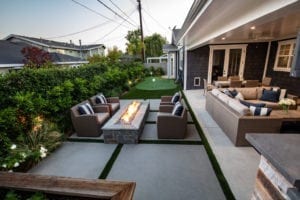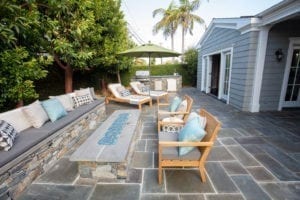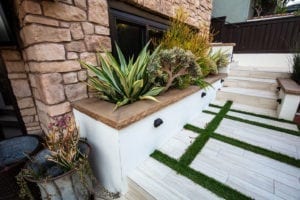Designing a minimalist garden in the vibrant city of Los Angeles provides an opportunity to create an oasis of tranquility amidst the urban bustle. By embracing simplicity and clean lines, a minimalist garden can serve as a serene retreat, seamlessly blending with the natural beauty of the city’s landscape.
This comprehensive guide offers a step-by-step approach to help you craft a minimalist garden that exudes elegance and promotes a sense of calm and balance. From understanding the fundamental principles of minimalist design to incorporating carefully selected elements, this guide will assist you in creating a harmonious outdoor space that resonates with the essence of modern tranquility.
1. Understanding Minimalist Garden Design
Minimalism in garden design prioritizes simplicity, aiming for uncluttered spaces that foster a sense of calm and tranquility. By focusing on clean lines, a limited color palette, and the use of natural materials, a minimalist garden can create a harmonious connection between the outdoor environment and the surrounding urban landscape of Los Angeles.
2. Assess Your Space
Before initiating the design process, carefully assess the dimensions, lighting conditions, and existing features of your garden in Los Angeles. Take into account the unique climatic conditions of the area to select plants that can thrive within the region’s specific microclimate. Consider the space’s limitations and potentials, ensuring that the design aligns with the overall vision for the minimalist garden.
3. Define the Space
Create a strong visual framework for the garden by incorporating clear boundaries and well-defined lines. Integrate fencing, walls, or hedges to establish the parameters of the outdoor space and guide the layout of the minimalist garden. Ensure that the defined space reflects a purposeful and cohesive design, emphasizing the key elements that contribute to the overall aesthetic appeal.
4. Understated Design Elements
Select design elements that accentuate a sense of understated elegance and sophistication within the minimalist garden. Focus on neutral tones, varied textures, and the interplay of light and shadow to create a serene and inviting ambiance. Emphasize the use of unpainted or corrugated metal panels and integrate carefully curated plant groupings to add depth and visual interest to the garden environment.
5. Limit the Materials
Maintain a balanced approach to the selection of hardscaping materials within the garden, ensuring that each element contributes to the overall minimalist aesthetic. Opt for a carefully paved and organized layout, keeping the use of materials to a minimum to avoid visual clutter and maintain the garden’s clean and uncluttered appearance. Employ a cohesive color scheme, incorporating shades of gray and contrasting neutral tones to establish a sense of unity and harmony within the outdoor space.
6. Minimal Plant Palette
Opt for a selective and cohesive plant palette that aligns with the minimalist design principles. Focus on integrating plant varieties that can thrive in the Los Angeles climate, emphasizing textures and shapes over a multitude of colors. Select evergreen plants and those with distinct, well-defined forms to create a cohesive and visually appealing garden. Coordinate the plant palette with the overall color scheme, incorporating shades of green and complementary neutral tones to foster a sense of balance and harmony within the outdoor space.
7. Incorporate Reflective Surfaces
Introduce reflective surfaces strategically within the garden to amplify natural light and create an illusion of spaciousness. Incorporate mirrors or reflective materials that blend seamlessly with the minimalist aesthetic, enhancing the visual depth and sophistication of the outdoor environment. Ensure that these surfaces are positioned thoughtfully to maximize their impact on the overall garden design while maintaining a sense of simplicity and balance.
8. Sculptural Elements
Integrate sculptural elements that complement the clean lines and minimalist appeal of the garden. Select sculptures or art installations with simple, abstract forms that serve as focal points within the outdoor space. Incorporate these elements in a way that enhances the overall aesthetic while creating a sense of visual interest and sophistication, contributing to the overall ambiance of the garden.
9. Linear Planting Beds
Create linear planting beds or raised planters that align with the strong lines and defined boundaries of the garden. Utilize these structured planting areas to emphasize symmetry and organization within the outdoor space, ensuring that the arrangement of plants reinforces the minimalist design principles. Implement neatly trimmed shrubs and grasses to define the edges of the planting beds, contributing to the overall clean and organized appearance of the garden.
10. Multi-Functional Furniture
Select multi-functional furniture pieces that complement the minimalist theme while offering practical functionality and comfort. Opt for sleek and streamlined designs that seamlessly integrate with the overall garden aesthetic, providing seating and storage solutions that enhance the usability of the outdoor space. Prioritize weather-resistant materials that can withstand the unique climatic conditions of Los Angeles, ensuring that the furniture maintains its visual appeal and functionality over time.

In the heart of Los Angeles, a well-designed minimalist garden in your home stands as a testament to the seamless integration of nature and contemporary aesthetics. By emphasizing simplicity, clean lines, and carefully curated elements, a minimalist garden can serve as a sanctuary that provides respite from the hustle and bustle of city life. The strategic use of reflective surfaces, sculptural elements, and linear planting beds contributes to the overall sense of balance and harmony within the outdoor environment. By implementing the principles outlined in this guide, you can create a minimalist garden that not only complements the surrounding urban landscape but also fosters a serene and inviting space for relaxation and contemplation.
To explore more ideas, don’t hesitate to visit The Benefits of Outdoor Living: Health, Happiness, and Home.




